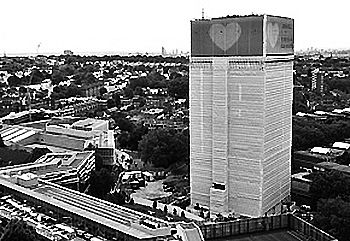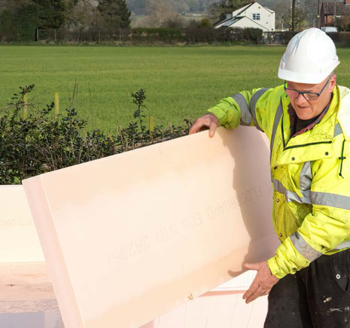Spacing
In the UK construction industry, the term "spacing" has several meanings depending on the context in which it is used. It generally refers to the measured distance between structural or building elements to ensure proper load distribution, alignment, and compliance with regulations:
- In structural engineering and construction, spacing refers to the distance between repetitive elements such as beams, columns, rafters, and joists. Proper spacing is crucial for maintaining structural integrity and ensuring the load is evenly distributed. Building regulations and design codes specify appropriate spacings for different materials and load conditions.
- In concrete construction, spacing relates to the distance between reinforcement bars (rebars) in reinforced concrete structures. This spacing is dictated by design standards such as Eurocode 2 to ensure adequate strength, prevent cracking, and allow proper concrete flow during pouring.
- In masonry construction, spacing can refer to the gaps left between bricks or blocks for mortar joints. Standard mortar joints typically have a thickness of around 10mm, but this can vary depending on the type of construction and aesthetic requirements.
- For elements such as screws, nails, bolts, and other fasteners, spacing defines the recommended distance between fixings to ensure secure attachment without compromising material integrity. This is particularly important in timber framing, drywall installation, and cladding systems.
- In mechanical and electrical installations, spacing refers to the required separation between wiring, conduits, and pipes to prevent overheating, interference, or maintenance difficulties. BS 7671 (IET Wiring Regulations) provides guidelines on electrical cable spacing, while plumbing installations follow specific standards for pipe separation.
Approved document A: Structure, 2004 edition incorporating 2004, 2010 and 2013 amendments, defines spacing as: ‘The distance between the longitudinal centres of any two adjacent timber members of the same type, measured in the plane of floor, ceiling or roof structure.’
[edit] Related articles on Designing Buildings
Featured articles and news
The UK's Modern Industrial Strategy: A 10 year plan
Previous consultation criticism, current key elements and general support with some persisting reservations.
Building Safety Regulator reforms
New roles, new staff and a new fast track service pave the way for a single construction regulator.
Architectural Technologist CPDs and Communications
CIAT CPD… and how you can do it!
Cooling centres and cool spaces
Managing extreme heat in cities by directing the public to places for heat stress relief and water sources.
Winter gardens: A brief history and warm variations
Extending the season with glass in different forms and terms.
Restoring Great Yarmouth's Winter Gardens
Transforming one of the least sustainable constructions imaginable.
Construction Skills Mission Board launch sector drive
Newly formed government and industry collaboration set strategy for recruiting an additional 100,000 construction workers a year.
New Architects Code comes into effect in September 2025
ARB Architects Code of Conduct and Practice available with ongoing consultation regarding guidance.
Welsh Skills Body (Medr) launches ambitious plan
The new skills body brings together funding and regulation of tertiary education and research for the devolved nation.
Paul Gandy FCIOB announced as next CIOB President
Former Tilbury Douglas CEO takes helm.
UK Infrastructure: A 10 Year Strategy. In brief with reactions
With the National Infrastructure and Service Transformation Authority (NISTA).
Ebenezer Howard: inventor of the garden city. Book review.
The Grenfell Tower fire, eight years on
A time to pause and reflect as Dubai tower block fire reported just before anniversary.
Airtightness Topic Guide BSRIA TG 27/2025
Explaining the basics of airtightness, what it is, why it's important, when it's required and how it's carried out.
Construction contract awards hit lowest point of 2025
Plummeting for second consecutive month, intensifying concerns for housing and infrastructure goals.
Understanding Mental Health in the Built Environment 2025
Examining the state of mental health in construction, shedding light on levels of stress, anxiety and depression.
The benefits of engaging with insulation manufacturers
When considering ground floor constructions.
Lighting Industry endorses Blueprint for Electrification
The Lighting Industry Association fully supports the ECA Blueprint as a timely, urgent call to action.























